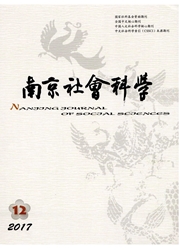

 中文摘要:
中文摘要:
韩国新村运动是发生在20世纪70年代、以实现农村现代化的运动。作为韩国历史上重要的农村发展项目,引起了研究者从各个不同层面进行效用发掘和价值解答。不过,现有研究对于新村运动的核心价值仍欠缺深度的考察。本文将逐一从新村运动对政权巩固的得失、对改善地方治理的贡献、对缩小发展的非均衡性以及对农民的改造等四个方面全面检视新村运动的成功与不足,认为新村运动主要是打造了一种共享型的发展,即由国家与社会共享发展的成果并承担农村现代化转型的负担。其带来的最重要结果是通过社区打造提升了农民适应市场化的能力,在激活农民的广泛参与中培养了民主意识和民主能力。正是在这个意义上,新村运动成了实现农村发展的韩国经验范本。把握这一点对于发展中国家该如何减少发展的阵痛并实现发展的公平性有其重要的借鉴价值。
 英文摘要:
英文摘要:
Korean New Village Movement (Saemaul Undong)occurred in 1970s, aimed to achieve the modernization of rural movement. As an important rural development policy in the modern history of Korea, researchers have explored the effectiveness and values of different aspects. However, most of the works pay more attention to the social and economic dimension but political significance. This paper reviewed the success and failure of the Saemaul Undong from four aspects : regime consolidation, effect on improvement of local governance, narrowing imbalances between city and countryside and reconstitution of traditional farmers, and provided that the core political value of the Saemaul Undong is the creation of a shareable development, namely the state and society share the fruits of development and bear the burden for the modernization of rural areas. The most important result is to improve the ability of farmers to adapt to the market through the construction of the community, and cultivate the consciousness and ability of democracy in the activation of the broad participation. It is in this sense that the Saemaul Undong has become a Korean model for rural development. It is of great reference for developing countries to reduce the travails of rural modernization and realize the fairness of development.
 同期刊论文项目
同期刊论文项目
 同项目期刊论文
同项目期刊论文
 期刊信息
期刊信息
